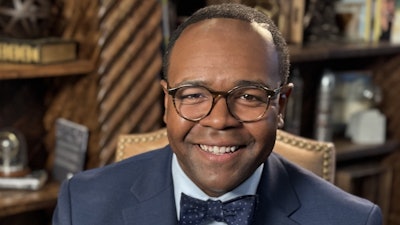In a rapidly changing society riddled with economic uncertainties, demographic shifts, political infighting, declining workforce participation rates, rising inflation, rising attacks on diversity, equity, and inclusion efforts, and a technological landscape that is evolving rapidly with deeper integrations with artificial intelligence, how is your college or university prepared to meet these challenges facing your faculty, staff, and student body? College presidents, now is the time to lead your college through developing a post-pandemic institutional strategic plan if you have not done so.
 Dr. Mordecai Ian Brownlee
Dr. Mordecai Ian Brownlee
Strategic plans tend to range in lifespan from three to five years. However, it is essential to note that some institutions develop plans for 10 years and beyond. To align your institutional practices with best practices, creating an annual budget should serve to resource all aspects of the strategic plan. Suppose your institution is operating on a pre-pandemic strategic plan. In that case, your institution is spending critical tuition, fees, donor funds, and potential public taxpayer dollars on plans and initiatives not rooted in current environmental scans and data. Consequently, it should be no surprise if your institution experiences declining student success metrics and fails to meet various institutional goals. Here are two tips for your institution to consider in developing a new forward-thinking strategic plan:
Assess the environmental challenges impacting your student body. According to the National Center for Education Statistics (NCES) 2023 National Postsecondary Student Aid Study (NPSAS), 23% of undergraduate college students and 12% of graduate students are experiencing food insecurity, accounting for more than 4 million students. The study also found that 8% of undergraduates and 5% of graduate students are experiencing homelessness, accounting for more than 1.5 million students. In addition to food and housing insecurity, in 2021, data showed that 51% of students cited transportation as an area where they struggle. By assessing these environmental impacts on your students, your institution is better prepared to develop a plan to fund long-term resources to address these barriers impacting enrollment, persistence, retention, and program completion.
Evaluate your institution’s ability to provide students with a high return on investment while also creating high economic mobility. According to the U.S. Department of Education, by 2027, 70% of jobs will require education or training beyond high school. Regarding enrollment strategy, the opportunity lies in your institution evaluating the number of individuals in your market with no-to-some college education and creating a plan to close this gap. Regarding economic and social mobility, educators must remember that students now, more than ever, expect a return on investment for their time, money, and efforts spent obtaining a post-secondary credential. Tools like the economic mobility index can be used to assess an institution’s ability to provide its students with a high return on investment. Interestingly, the economic mobility index creators found that schools offering the quickest return on investment for low-income students provide little economic mobility.
The work of advancing our institutions of higher education never ends and neither should the impact of our strategic plans.
Dr. Mordecai Ian Brownlee is president of the Community College of Aurora in Colorado.






















